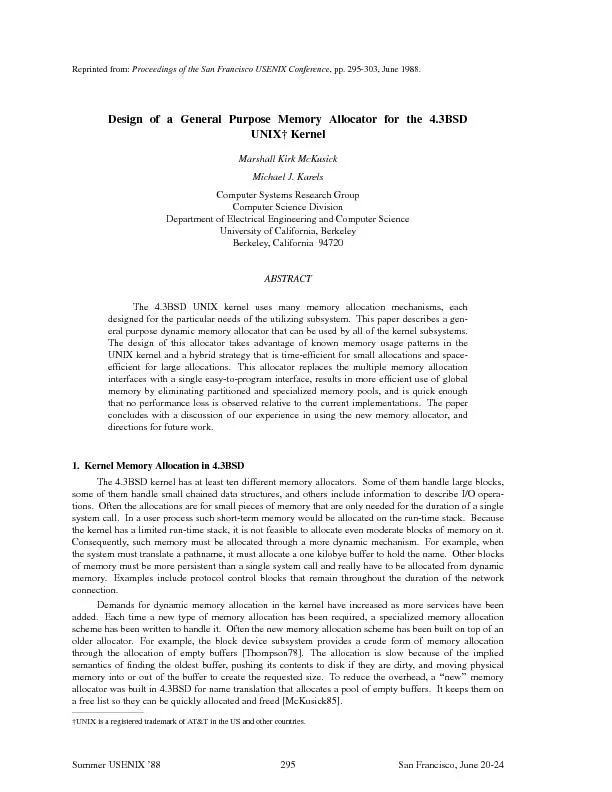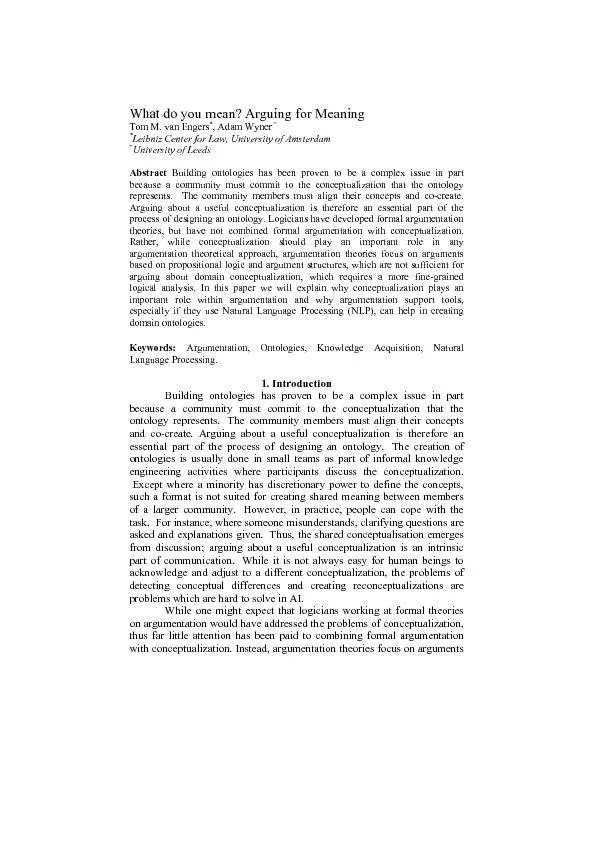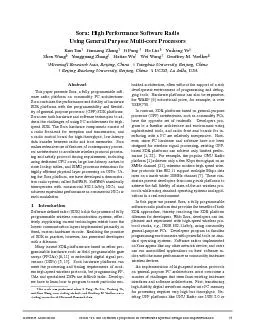PDF-Proceedings of the San Francisco USENIX Conference,pp. 295-303, June 1
Author : karlyn-bohler | Published Date : 2016-02-29
135UNIX is a registered trademark of ATT in the US and other countriesSummer USENIX 88295 SanFrancisco June 2024 Design of a General Purpose Memory McKusick KarelsThis
Presentation Embed Code
Download Presentation
Download Presentation The PPT/PDF document "Proceedings of the San Francisco USENIX ..." is the property of its rightful owner. Permission is granted to download and print the materials on this website for personal, non-commercial use only, and to display it on your personal computer provided you do not modify the materials and that you retain all copyright notices contained in the materials. By downloading content from our website, you accept the terms of this agreement.
Proceedings of the San Francisco USENIX Conference,pp. 295-303, June 1: Transcript
Download Rules Of Document
"Proceedings of the San Francisco USENIX Conference,pp. 295-303, June 1"The content belongs to its owner. You may download and print it for personal use, without modification, and keep all copyright notices. By downloading, you agree to these terms.
Related Documents














